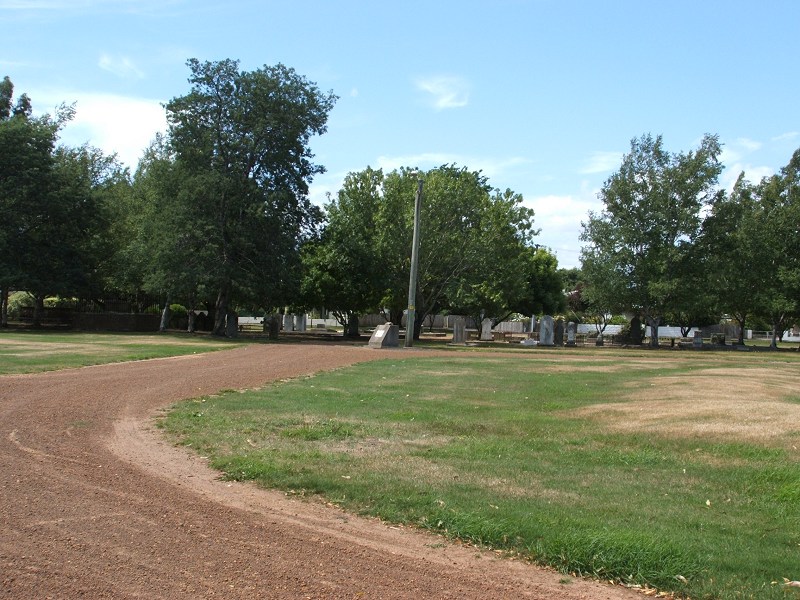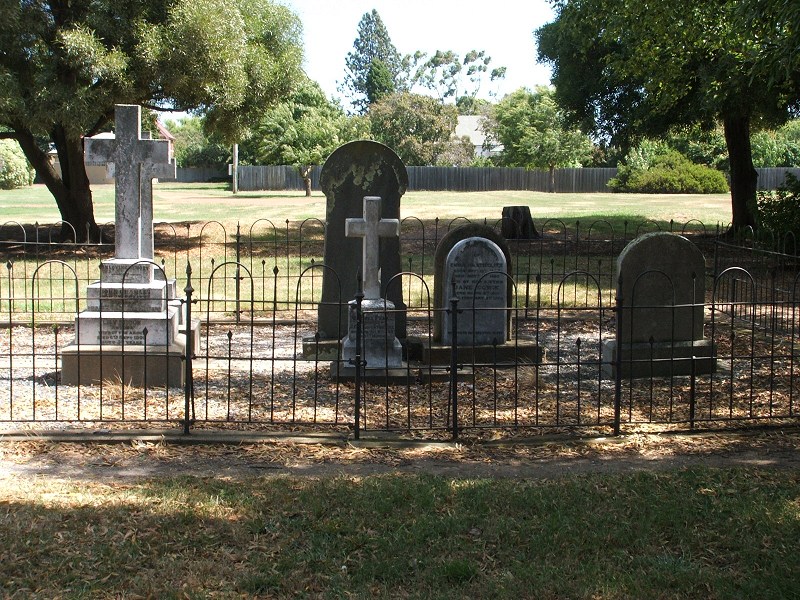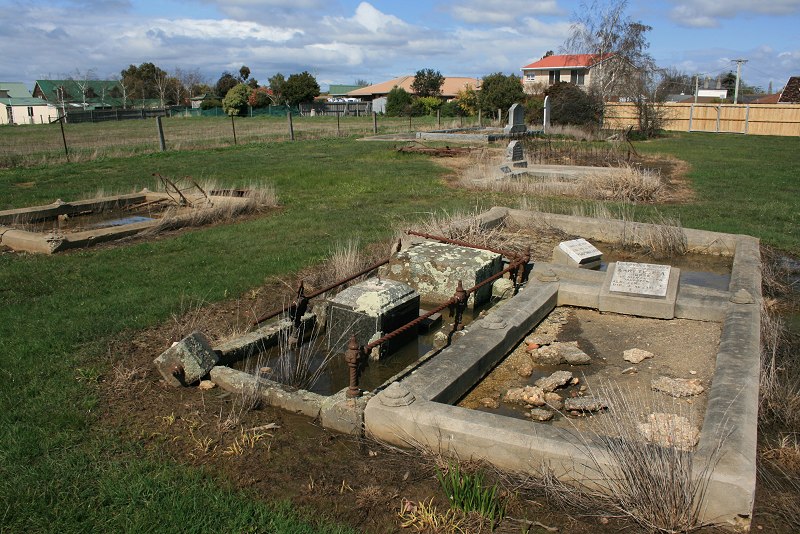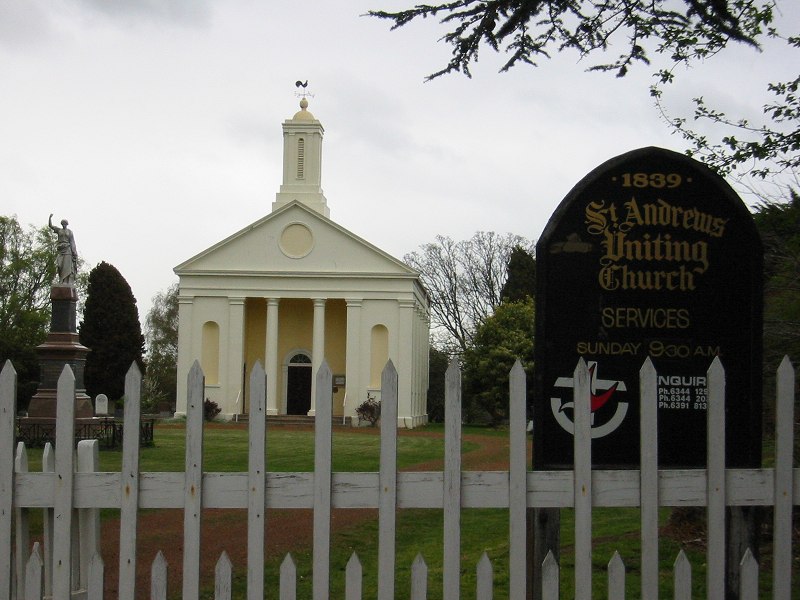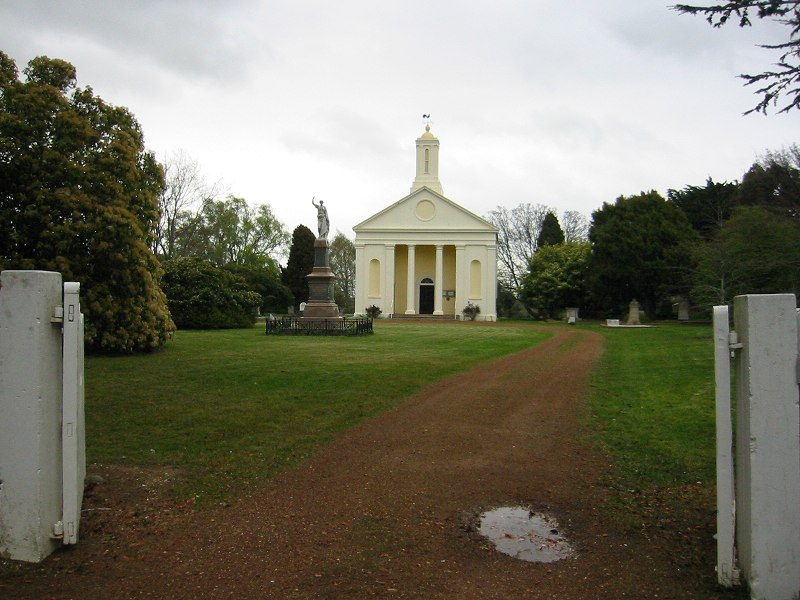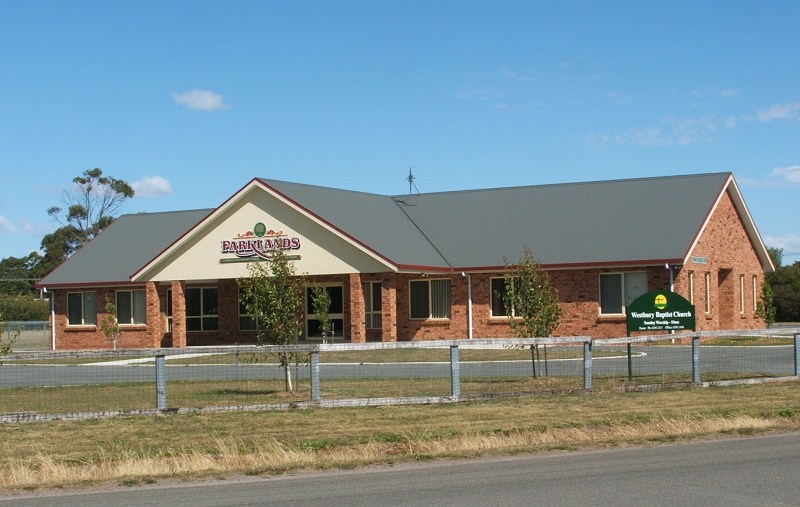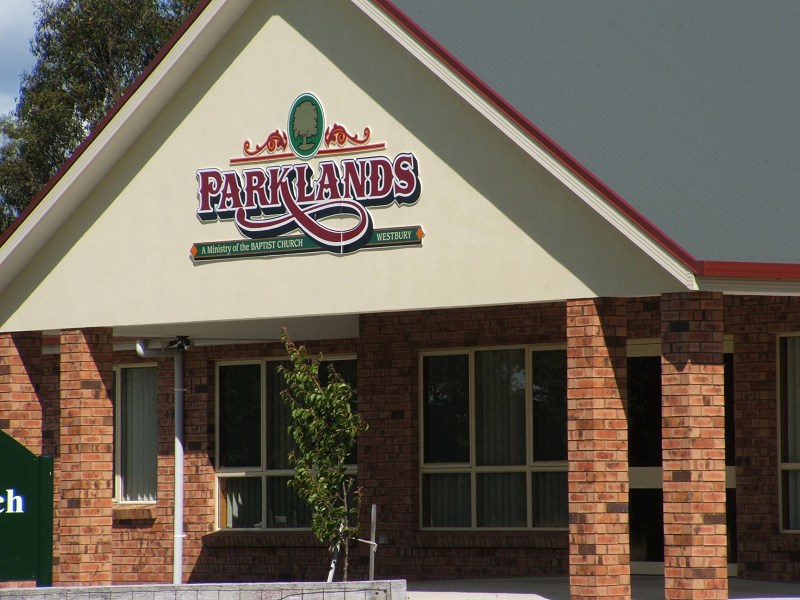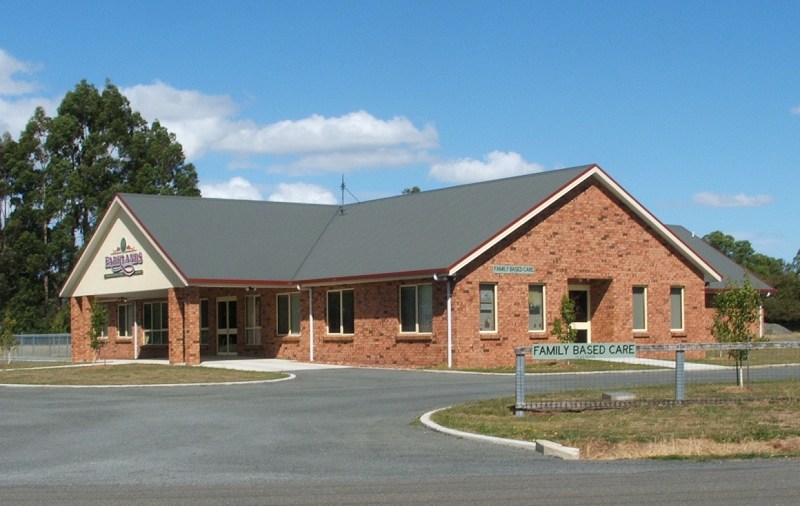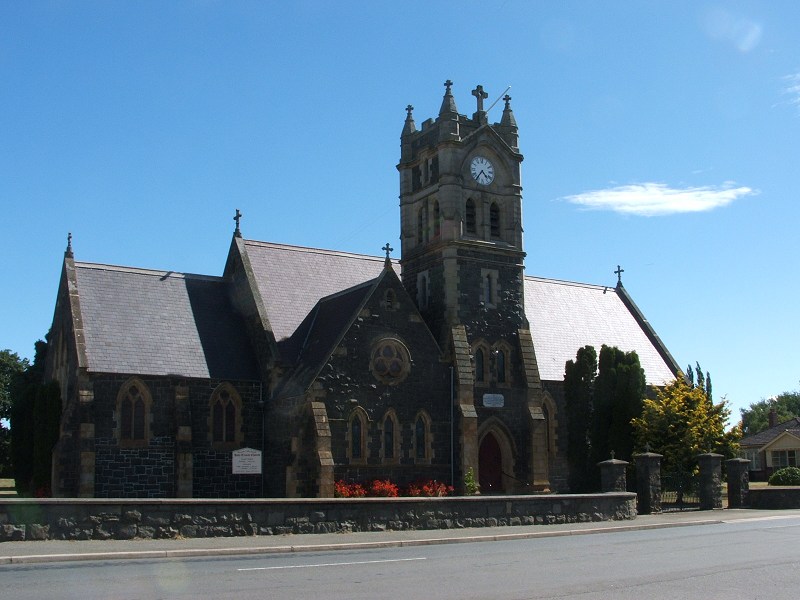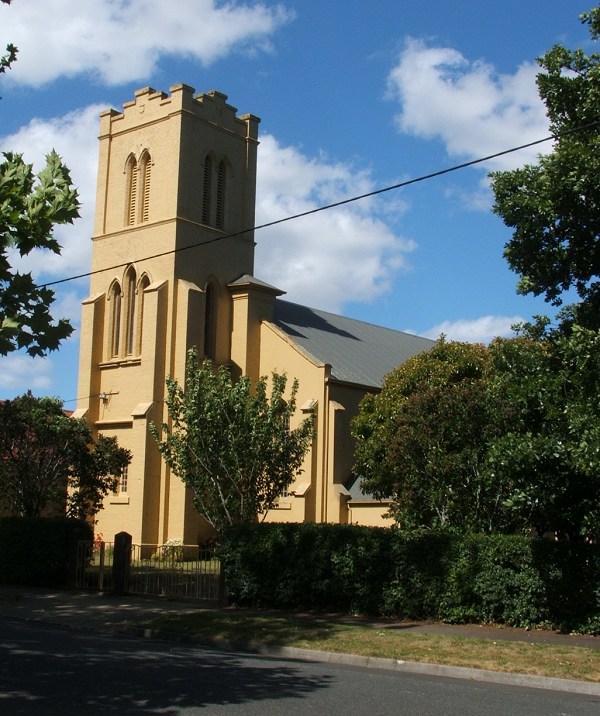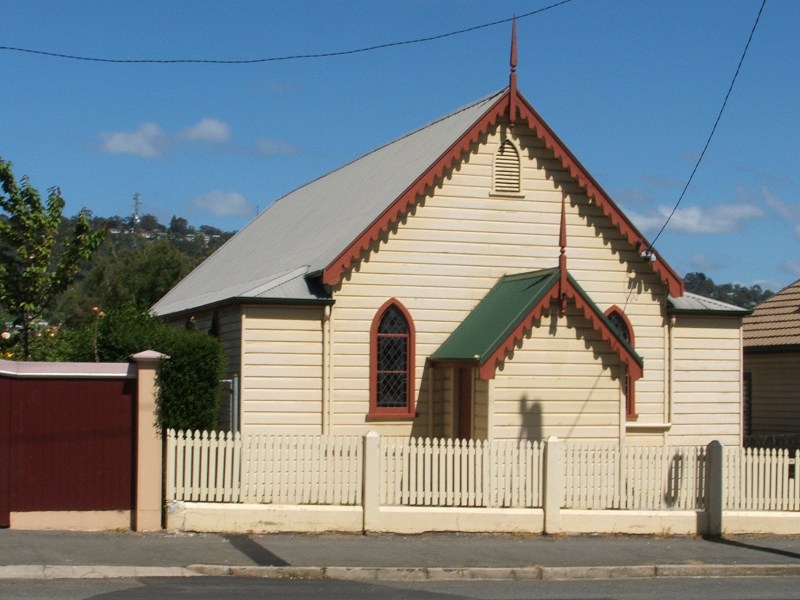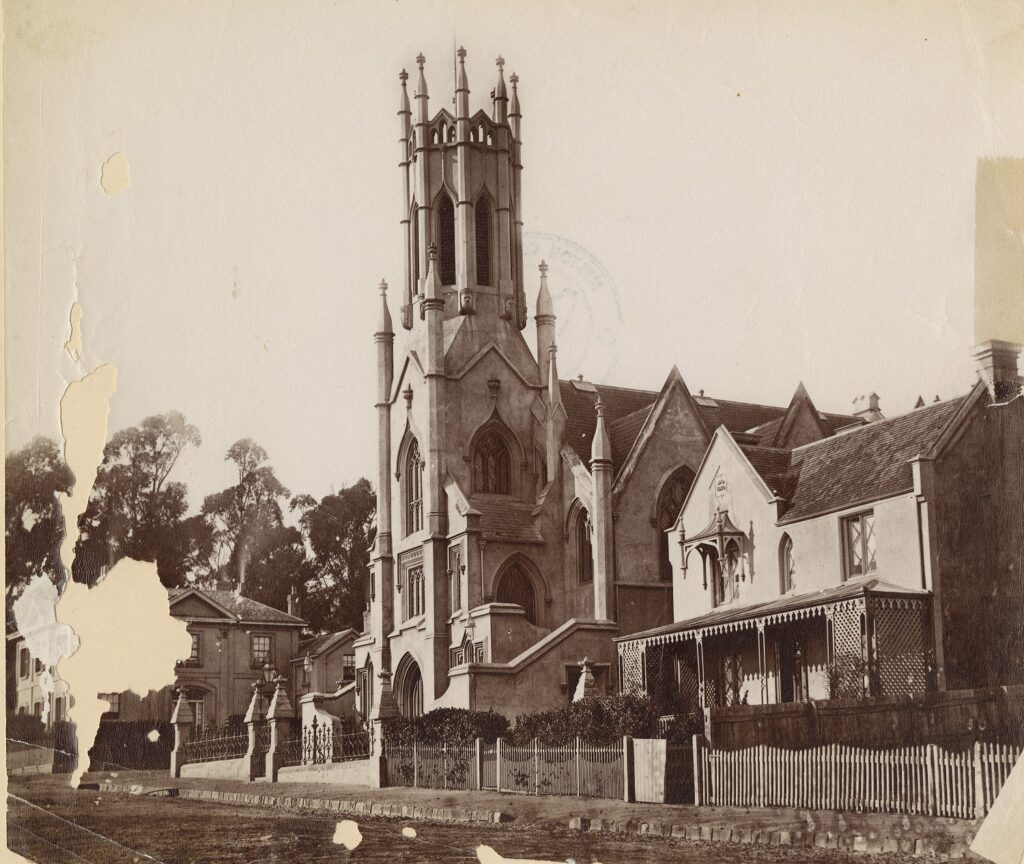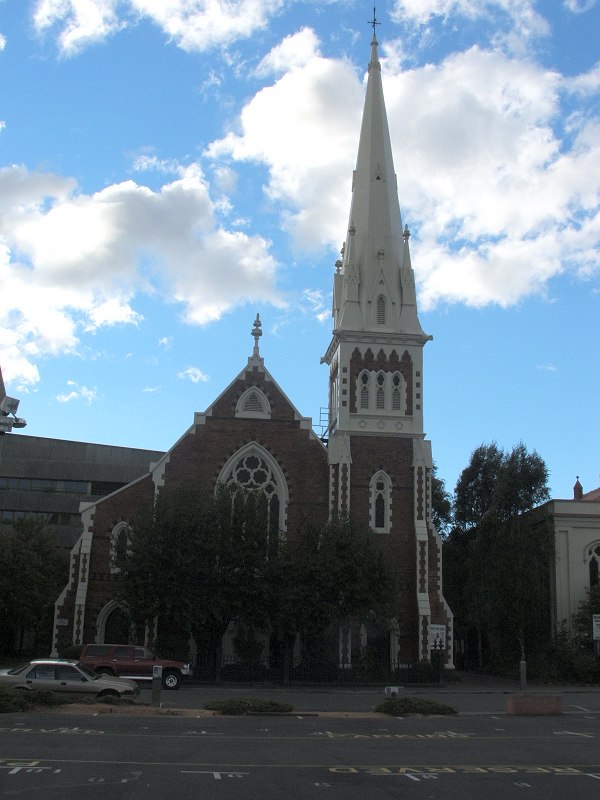
Opened 21 February 1868, after the congregation outgrew the original Wesleyan Chapel next door, which is now the church hall. The name was changed in 1982 after the joining of three congregations (see below) with the creation of the Uniting Church. The website provides a account of the background and construction of the church (Pilgrim History for Web near bottom of page).
Category Archives: North
Anglican Cemetery, Evandale
The headstones are located amongst a band of trees on one side of Pioneer Park in the middle of the town (see on Google Maps), with the church on the other side of the park, off to the left in this photo. There are good individual photos and transcriptions of the headstones available on other websites (see links page) so I’m not going to duplicate them here. This is more about looking at them in context. (Although if you can’t find a particular stone within its context in the photos, comment and I’ll see if I can find it, although the new headstones & rose garden I don’t have photos of.)
Evandale Catholic Cemetery
(Note: many of these graves have smashed headstones & fences, with can be distressing for some people, Also the puddles after the rain exaggerate the vandalised effect.)
The green, wet photos are from September 2009.
The dry, yellow photos are from 2005. Starting in the foreground, then over to the back left.
Continue reading
St Andrews Anglican Church, Evandale
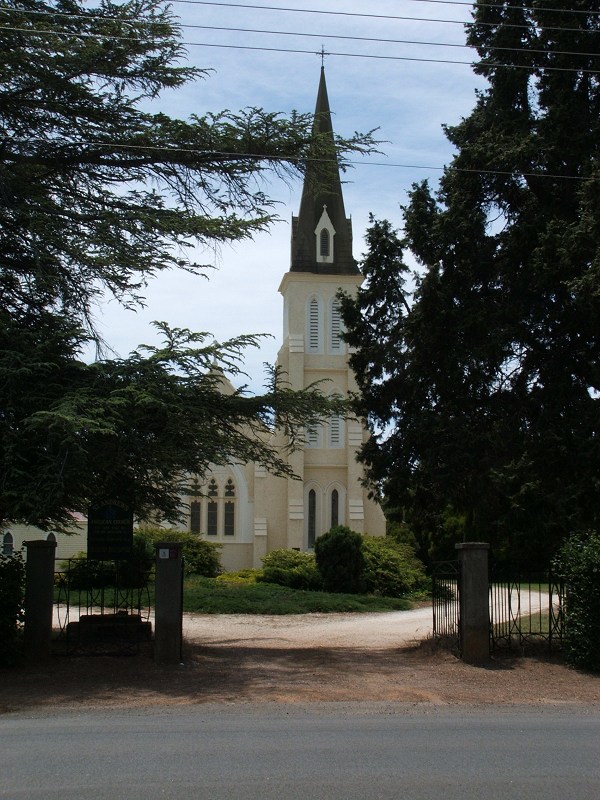
Opened 1872, replacing two earlier buildings.
Some background.
Some more background written for the centenary of the Anglican church in Evandale.
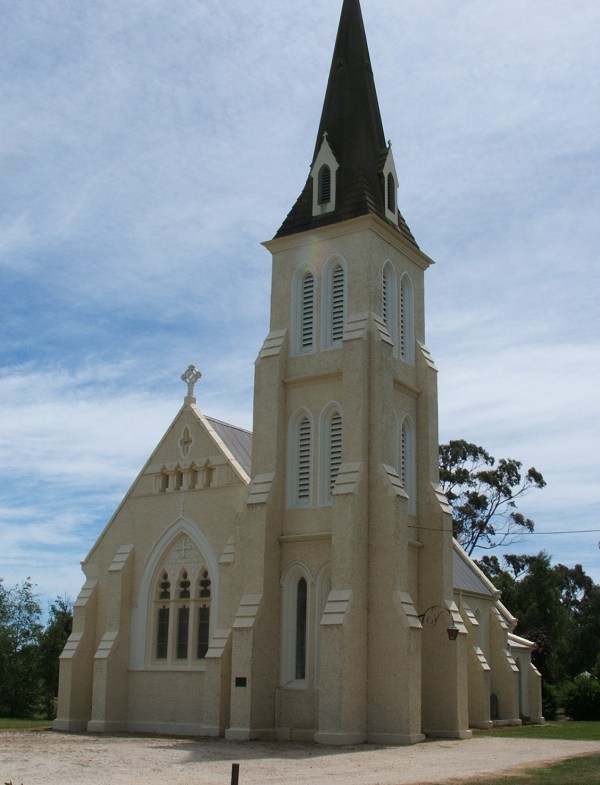
The first Anglican chapel was opened in 1837.
Continue reading
St Andrew’s Presbyterian/Uniting Church, Evandale
Parklands Baptist Church, Westbury
Holy Trinity Catholic Church, Westbury
Foundation stone laid May 1869 and church opened 20 May 1874, replacing an older wooden church.
Opening:
Launceston Examiner
The Mercury
Cornwall Chronicle.
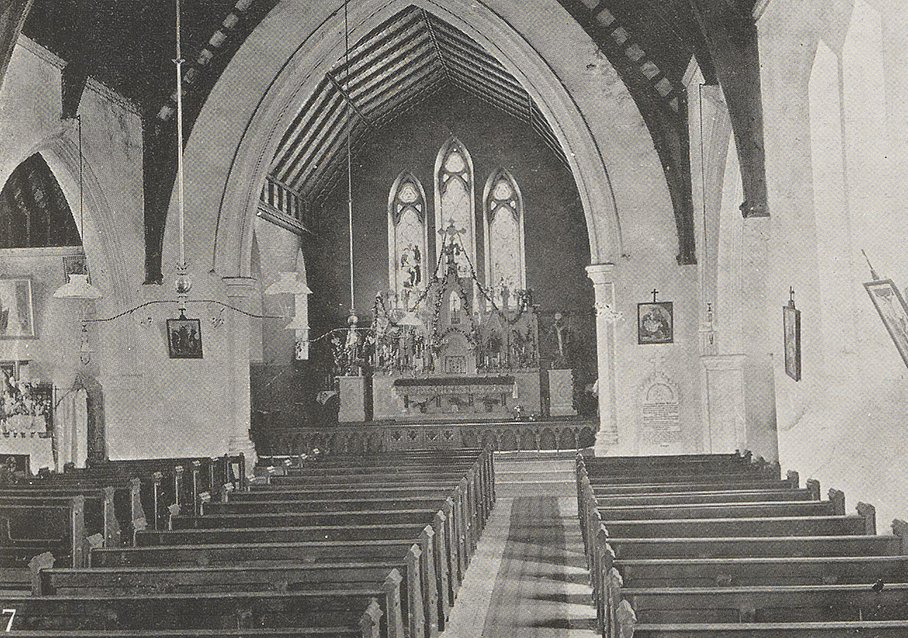
Interior of Holy Trinity (Catholic) Church, Wesbury, North-Western Tasmania, showing the last resting place of the late Venerable Archdeacon Hogan (on the right)
Weekly Courier, 21 May 1914
St Andrews Anglican Church, Westbury
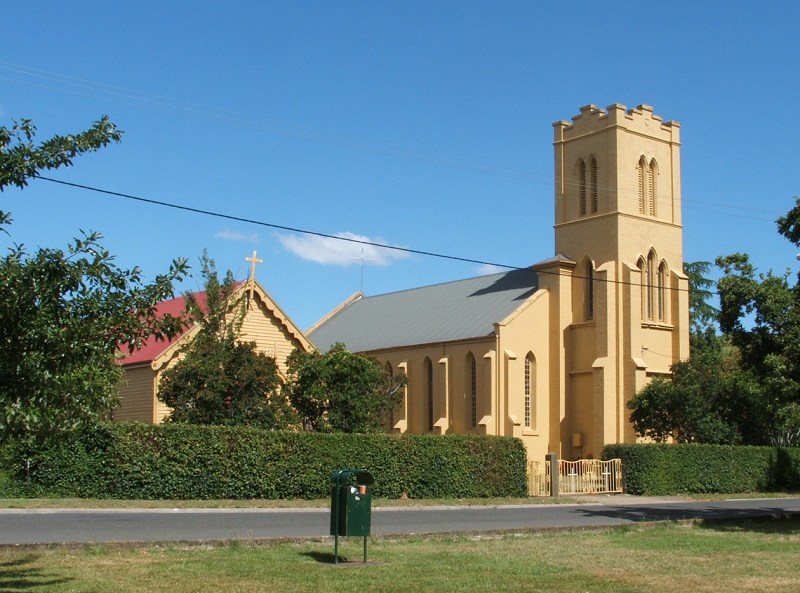
Foundation stone laid 1836.
Consecrated 1851.
A brief history at the time of the centenary from the Mercury and the Examiner.
Primitive Methodist Church, South Launceston
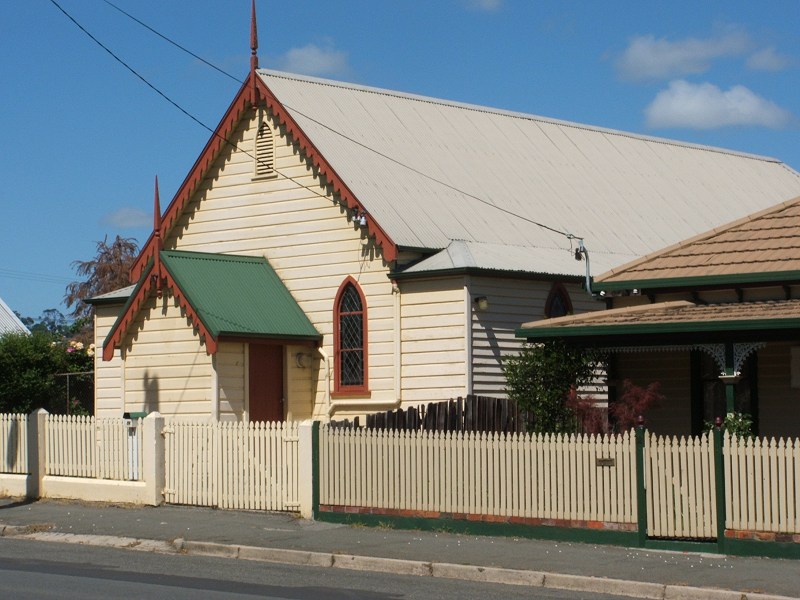
34 Mulgrave St, on Google Maps
The opening of the new Primitive Methodist Mission Church at Mulgrave
street, Hampden, was celebrated by a grand re-union and meeting last evening.
The pretty building was crowded, and a strong choir rendered excellent sacred
hymns, several members giving solos.
The Examiner, 28 March 1891
HAMPDEN, formerly called Galvin Town, can now boast of a church, which has been erected for the convenience of residents in and around that populous district. It has been established by the Primitive Methodists for mission purposes, and is situated in Mulgrave-street, The formal opening took place yesterday, when the Rev. C. Anthony preached in the afternoon from Genesis xii., 7-8, and in the evening from Mark v., 27–28, Mrs Heath presided at the organ, which. was kindly lent for the occasion by Messrs, Walch Bros. and Birchall, and the members of the choir of the Frederick-street Primitive Methodist Church assisted with the singing.
The Examiner, 21 March 1891
(former) Chalmers Church, Launcestom
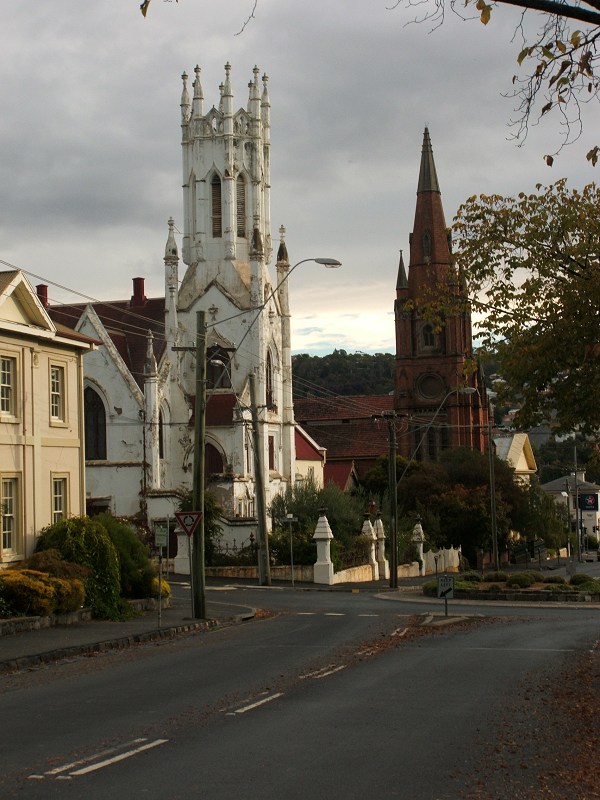
Constructed in 1859 as the Free Church of Scotland, later Presbyterian.
In the 1970s, the congregation that used Chalmers Church became part of the Uniting Church, and a few years later, moved to Pilgrim Church in Paterson Street. The church was de-consecrated in 1981. A short history on the Pilgrim Church website has this background to the construction of Chalmers:
While the other denominations were busy, so too was a band of Presbyterians. In 1840 – 1850, they worked together to form the Van Diemen’s Land Free Church of Scotland. On 11th May, 1844, the Launceston group formed “The Launceston Free Church Association” for the purpose of supporting those ministers in Scotland who had chosen to secede to the Free Church rather than remain with the established Church of Scotland and submit to the dictates of parliament. They hired a room belonging to a Mr. Bell and began a Sabbath School, conducting a Divine Service when a minister was available. An appeal was made to the Assembly of the Free Church for a permanent minister and the Rev. James Lindsay was appointed on 7th December, 1850. A move was then made to Wycliffe Chapel, York Street and the Temperance Hall. On January 19th, 1859, a special service was conducted in the Wycliffe/Baptist Chapel, followed by a procession to the site of the proposed Presbyterian Church and the foundation stone was laid. Twelve months later, 15th January 1860, Chalmers Church was opened. It was named after Dr. Thomas Chalmers who in 1859 took a strong stand on Assembly’s declaration “… that the Church should not submit.”

